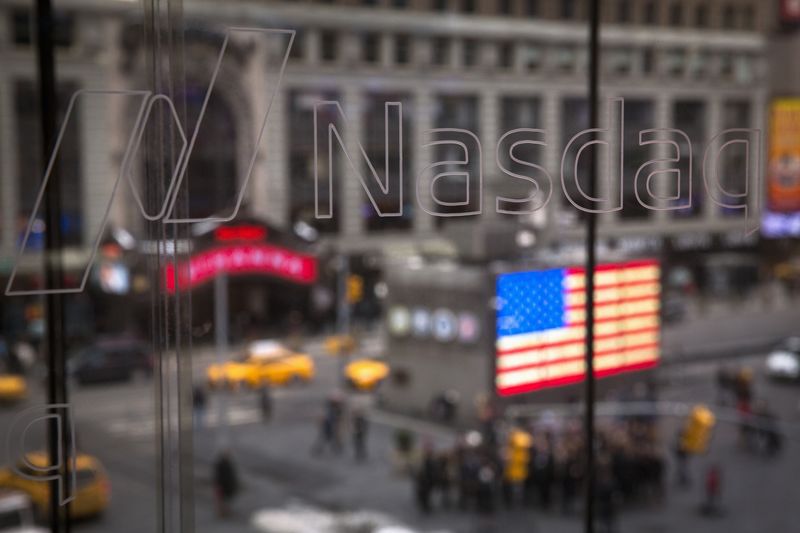(Bloomberg) -- The Nasdaq 100 is heading for its second-best quarter in a decade — and it has the Federal Reserve’s recent largess to thank for its gains.
The tech gauge soared 17% in the first quarter, buoyed by the Fed’s loosening of its balance sheet after Silicon Valley Bank’s collapse earlier this month led to worries about monetary conditions tightening. In the past decade, there’s only been one better quarter for the Nasdaq: between April and June 2020, when it rose more than 30% as, again, the Fed was pumping liquidity. Then it was to combat the effects of the pandemic.
The chart below shows how powerful Fed easing can be for tech shares, which struggled last year when the central bank began tightening. The Nasdaq’s latest 10% leg up coincided with the Fed’s balance sheet expanding by $400 billion. It’s clear that the tech rally will continue if the Fed continues to boost liquidity.
It isn’t just in the US that tech is gaining from the Fed’s easing. Global tech stocks have outperformed banking shares since early March, after largely moving in tandem last year. Banks are down, while tech is rising.
The recent divergence between the sectors highlight two things: First, this tech rally may just continue as traders increasingly bet the banking turmoil will lead the Fed, the European Central Bank and the Bank of England to pivot from fighting inflation as a goal and cut rates before the year ends. A low interest-rate environment, of course, is supportive of growth stocks like tech.
And second: tech firms, with their relatively low debt levels and strong balance sheets, are increasingly seen as occupying a sector that’s better positioned to weather the storm in times of financial turmoil. They are also beneficiaries of the corporate world’s ongoing shift toward digitization, which has led to increased demand for tech products and services, especially as the crazy for all-things AI heats up.
- NOTE: Nour Al Ali and Valerie Tytel write for Bloomberg’s Markets Live. The observations are their own and not intended as investment advice. For more markets commentary, see the MLIV blog
©2023 Bloomberg L.P.
